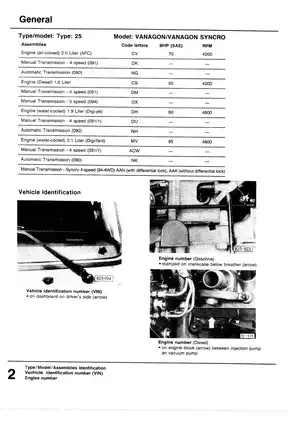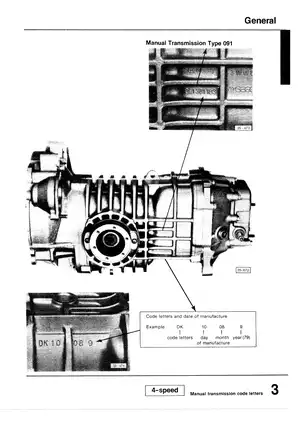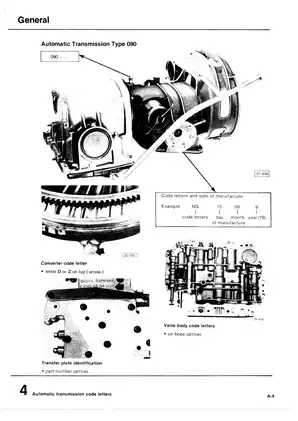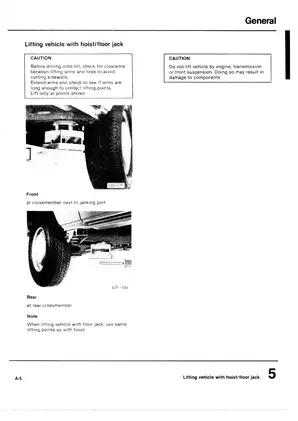Factory Service & Repair: Volkswagen Vanagon & Syncro (1979-1991)
Product Gallery

Sample pages from the Factory Service & Repair: Volkswagen Vanagon & Syncro (1979-1991) manual




Purchase Information
1979-1991 Volkswagen Vanagon & Syncro Service Manual - Technical Specifications
- Document Number / Seller:
- 26663 / Melissa Young
- File Size:
- 258.56 MB
- File Type:
- Language:
- English
- Printable:
- Yes
- Estimated Download Time:
- 5.3 Minutes
- Delivery Format:
- Digital (PDF) - Instant Access
- Category:
- Van
- Brand:
- Volkswagen
- Reviewed and Approved:
- Apr 29, 2025
Volkswagen Models and Parts Covered in this Van Manual
- Vanagon (1979-1991)
- Syncro (1979-1991)
Complete Manual Information
Volkswagen Vanagon & Syncro Service Manual, covers 1979-1991
Unlock the full potential of your Volkswagen Vanagon and Syncro with our Comprehensive Service Manual, covering vehicle models from 1979 to 1991. This manual is an essential resource for both new and experienced mechanics looking to maintain, repair, or upgrade their vehicles. It includes detailed instructions, diagrams, and specifications specifically tailored for the unique features of the Vanagon and Syncro.
What's Inside
This extensive manual includes the following sections:
- General Information: Codes, identification numbers, and vehicle specifications.
- Engine Components: Detailed guidance on removing and installing various engines, including air-cooled and water-cooled options.
- Transmission Insights: Comprehensive instructions for both manual and automatic transmission types, with specifications on tightening torques.
- Towing Procedures: Step-by-step towing instructions to ensure safe vehicle transport without causing transmission damage.
- Lifting Guidelines: Safe hoisting techniques to prevent damage to critical vehicle components.
- Emergency Procedures: Essential information for emergency towing and handling vehicle breakdowns.
- Detailed Index: A thorough index to help you quickly locate any topic with ease.
This manual serves as your go-to guide for everyday maintenance or major repairs. Empower yourself with the knowledge needed to keep your Vanagon and Syncro in excellent condition for years to come!
Download Instructions for Volkswagen Van Manual
Frequently Asked Questions - Volkswagen Van Manual
What does this Volkswagen manual cover?
This comprehensive service manual covers detailed repair procedures, maintenance schedules, troubleshooting guides, and technical specifications for Factory Service & Repair: Volkswagen Vanagon & Syncro (1979-1991). It includes information for the following models: - Vanagon (1979-1991) - Syncro (1979-1991).
Is this manual suitable for beginners?
Yes, this Volkswagen manual is designed for both professional technicians and DIY enthusiasts. It includes step-by-step procedures with clear illustrations and safety guidelines for Van maintenance and repair.
What file format will I receive?
You will receive this manual as a PDF file (258.56 MB), which is compatible with all devices. The manual is fully searchable and printable for your convenience.
How quickly can I access the manual after purchase?
You'll receive instant access to your Volkswagen Van manual immediately after payment completion. The download link is valid for 3 days, with lifetime re-download guarantee.
Can I print specific sections of the manual?
Absolutely! This digital manual allows you to print any section you need, from individual pages to complete chapters, making it perfect for workshop use.
Customer Reviews and Feedback
Read what our customers say about this Volkswagen Van manual and share your own experience.
Add Comment
This policy contains information about your privacy. By posting, you are declaring that you understand this policy:
- Your name, rating, website address, town, country, state and comment will be publicly displayed if entered.
- Aside from the data entered into these form fields, other stored data about your comment will include:
- Your IP address (not displayed)
- The time/date of your submission (displayed)
- Your email address will not be shared. It is collected for only two reasons:
- Administrative purposes, should a need to contact you arise.
- To inform you of new comments, should you subscribe to receive notifications.
- A cookie may be set on your computer. This is used to remember your inputs. It will expire by itself.
This policy is subject to change at any time and without notice.
These terms and conditions contain rules about posting comments. By submitting a comment, you are declaring that you agree with these rules:
- Although the administrator will attempt to moderate comments, it is impossible for every comment to have been moderated at any given time.
- You acknowledge that all comments express the views and opinions of the original author and not those of the administrator.
- You agree not to post any material which is knowingly false, obscene, hateful, threatening, harassing or invasive of a person's privacy.
- The administrator has the right to edit, move or remove any comment for any reason and without notice.
Failure to comply with these rules may result in being banned from submitting further comments.
These terms and conditions are subject to change at any time and without notice.
Comments (1)